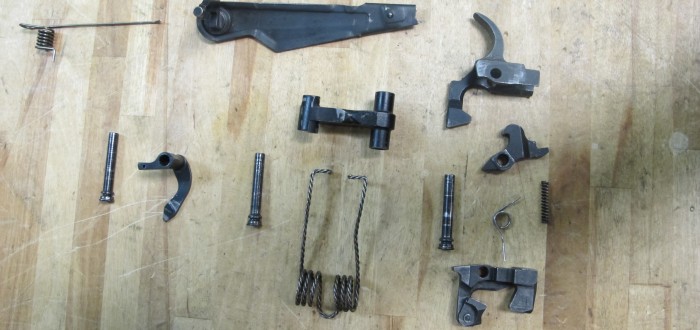Armament Research Services has released its eighth Research Note, focusing on the durability and longevity of self-loading rifles. Authored by ARES Researcher Ian McCollum, the Note examines some of the core explanations for the durability of such weapons, as well as identifying the components which suffer during regular use and from poor maintenance. In particular, the Note discusses the effects of degradation upon the rifling in a firearm’s barrel, wooden or polymer stocks and other furniture, and its springs.
Below are some extracts from the Research Note:
The major components of a self-loading firearm must necessarily be made of materials strong enough to withstand the heat and pressure effects of cartridges being fired. In addition, military rifles are specifically designed to continue functioning through adverse combat conditions. This dictates that their major components are not liable to break from repeated use, nor from storage. In the simplest terms, they are stout mechanical devices most typically produced from steel or alloyed metals.
…
Some types of ammunition make use of primer compounds which leave salt residues inside rifle barrels; these salt crystals are hygroscopic and can attract atmospheric water, contributing to barrel corrosion. If barrels are not cleaned and lightly coated in a protective oil, corrosion can lead to degraded accuracy. The speed and likelihood of this type of damage depends on the ambient humidity, the type of ammunition used, the quantity of ammunition fired, the composition of the barrel, and other environmental factors.
…
Given the rarity of fundamentally catastrophic damage to a self-loading military rifle in the course of normal use or storage and the easy reparability of the most common sources of damage, it is not uncommon for such a weapon to have a service life of many decades. The United States’ Civilian Marksmanship Program (CMP), for example, is still selling M1 Garand rifles which were manufactured in the 1940s and 1950s. The oldest mass-produced self-loading military rifles in existence date to the late 1930s and early 1940s, and it is not uncommon to find military rifles of this age (70 years or more) in conflict zones to the present day. ARES has documented such rifles in Mali, Libya, Ukraine, Syria, and elsewhere.
The full Research Note can be found here. For other ARES publications, click here.

